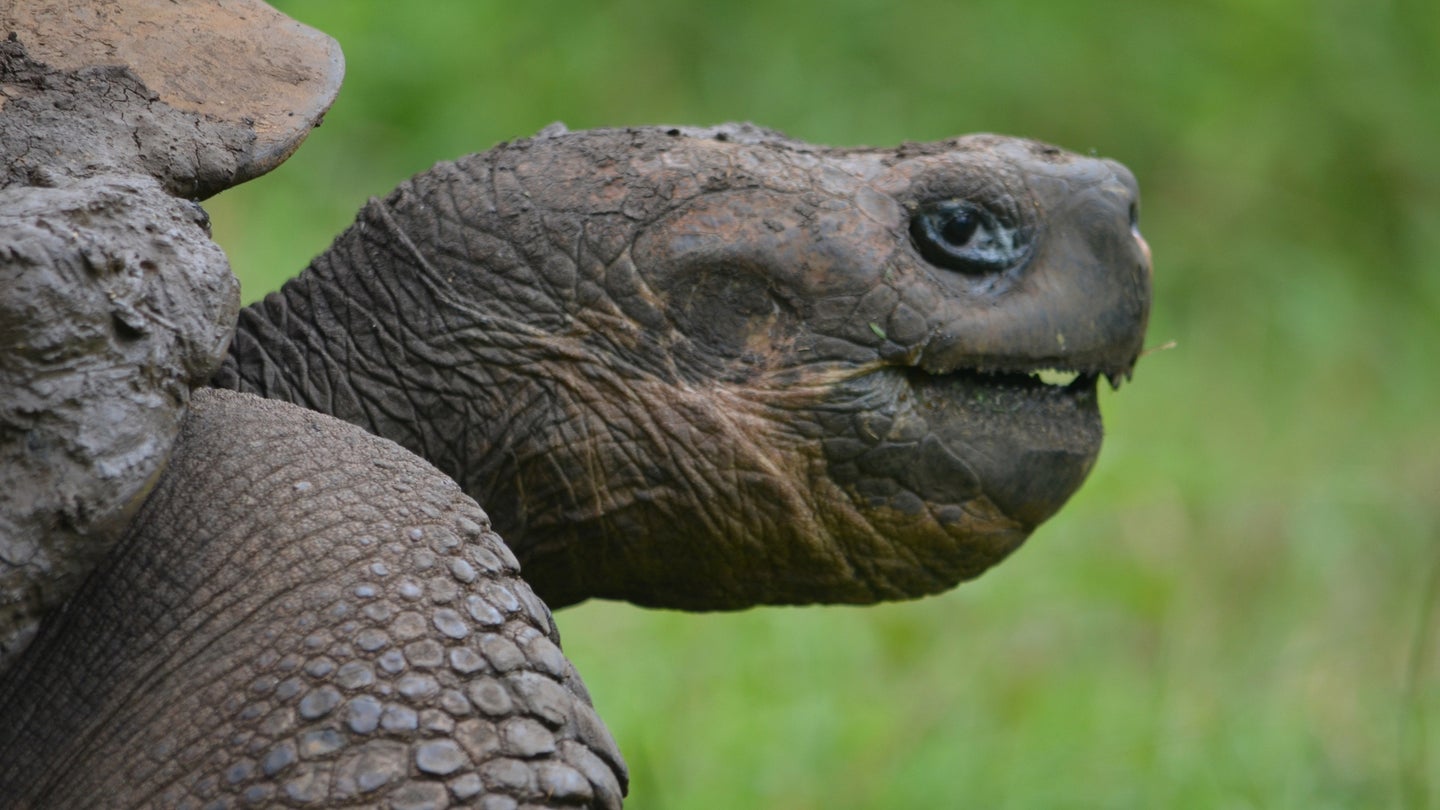
This article was originally featured on Hakai Magazine, an online publication about science and society in coastal ecosystems. Read more stories like this at hakaimagazine.com.
In the late 19th century, whalers, settlers, and pirates changed the ecology of the Galapagos Islands by poaching some native species—like Galapagos giant tortoises—and introducing others, like goats and rats. The latter species became pests and severely destabilized the island ecosystems. Goats overgrazed the fruits and plants the tortoises ate while rats preyed on their eggs. Over time, the tortoise population plummeted. On Española, an island in the southeast of the archipelago, the tortoise count fell from over 10,000 to just 14. Along the way, with goats eating all the plants they could, Española—once akin to a savanna—turned barren.
A century later, conservationists set out to restore the Galapagos giant tortoise on Española—and the island ecosystem. They began eradicating the introduced species and capturing Española’s remaining tortoises and breeding them in captivity. With the goats wiped out and the tortoises in cages, the ecosystem transformed once again. This time, the overgrazed terrain became overgrown with densely packed trees and woody bushes. Española’s full recovery to its savanna-like state would have to wait for the tortoises’ return.
From the time those 14 tortoises were taken into captivity between 1963 and 1974 until they were finally released in 2020, conservationists with the NGO Galápagos Conservancy and the Galapagos National Park Directorate reintroduced nearly 2,000 captive-bred Galapagos giant tortoises to Española. Since then, the tortoises have continued to breed in the wild, causing the population to blossom to an estimated 3,000. They’ve also seen the ecology of Española transform once more as the tortoises are reducing the extent of woody plants, expanding the grasslands, and spreading the seeds of a key species.
Not only that, but the tortoises’ return has also helped the critically endangered waved albatross—a species that breeds exclusively on Española. During the island’s woody era, Maud Quinzin, a conservation geneticist who has previously worked with Galapagos tortoises, says that people had to repeatedly clear the areas the seabirds use as runways to take off and land. Now, if the landing strips are getting overgrown, they’ll move tortoises into the area to take care of it for them.
The secret to this success is that—much like beavers, brown bears, and elephants—giant tortoises are ecological architects. As they browse, poop, and plod about, they alter the landscape. They trample young trees and bushes before they can grow big enough to block the albatrosses’ way. The giant tortoises likewise have a potent impact on the giant species of prickly pear cactuses that call Española home—one of the tortoises’ favorite foods and an essential resource for the island’s other inhabitants.
When the tortoises graze the cactus’s fallen leaves, they prevent the paddle-shaped pads from taking root and competing with their parents. And, after they eat the cactus’s fruit, they drop the seeds across the island in balls of dung that offer a protective shell of fertilizer.
The extent of these and other ecological effects of the tortoise are documented in a new study by James Gibbs, a conservation scientist and the president of the Galápagos Conservancy, and Washington Tapia Aguilera, the director of the giant tortoise restoration program at the Galápagos Conservancy.
To study these impacts up close, they fenced off some of the island’s cactuses, which gave them a way to assess how the landscapes evolve when they’re either exposed to or free from the tortoises’ influences. They also studied satellite imagery of the island captured between 2006 and 2020 and found that while parts of the island are still seeing an increase in the density of bushes and trees, places where the tortoises have rebounded are more open and savanna-like.
As few as one or two tortoises per hectare, the scientists write, is enough to trigger a shift in the landscape.
Dennis Hansen, a conservation ecologist who has worked with the tortoises native to the Aldabra atoll in the Indian Ocean, says that while the findings line up with what conservationists expected, it was nice to have their suspicions confirmed. The results bode well for other rewilding projects that include giant tortoise restoration as a keystone of their efforts, he says, such as those underway on other islands in the Galapagos archipelago and on the Mascarene Islands in the Indian Ocean.
But on Española itself, though the tortoises have been busy stomping shoots and spreading seeds, they have more work to do. In 2020, 78 percent of Española was still dominated by woody vegetation. Gibbs says it may take another couple of centuries for Española’s giant tortoises to reestablish something like the ratio of grasses, trees, and bushes that existed before Europeans landed in the archipelago. But that long transformation is at least underway.
This article first appeared in Hakai Magazine and is republished here with permission.
The post Galapagos giant tortoises are restoring their own ecosystem appeared first on Popular Science.
Articles may contain affiliate links which enable us to share in the revenue of any purchases made.
from | Popular Science https://ift.tt/NtYUl5L



0 Comments